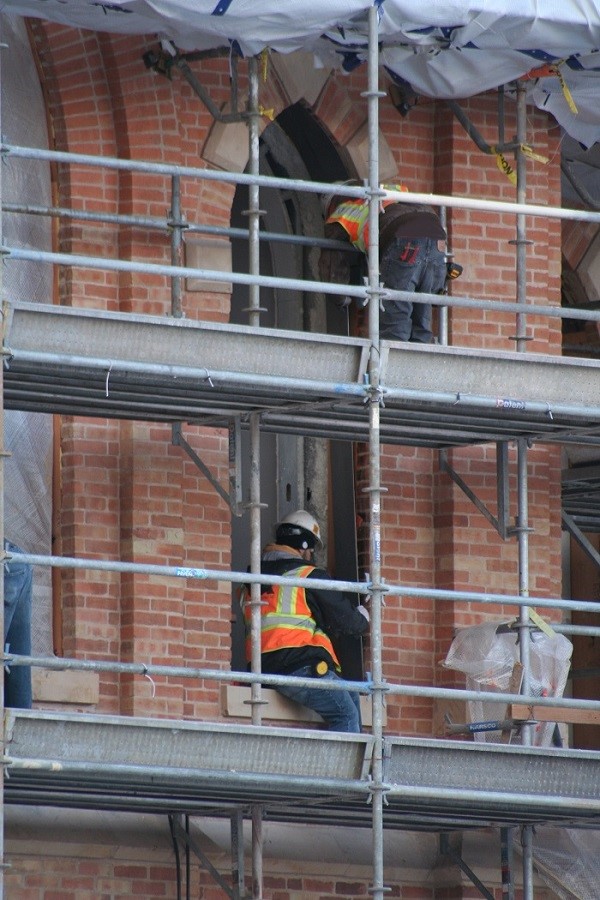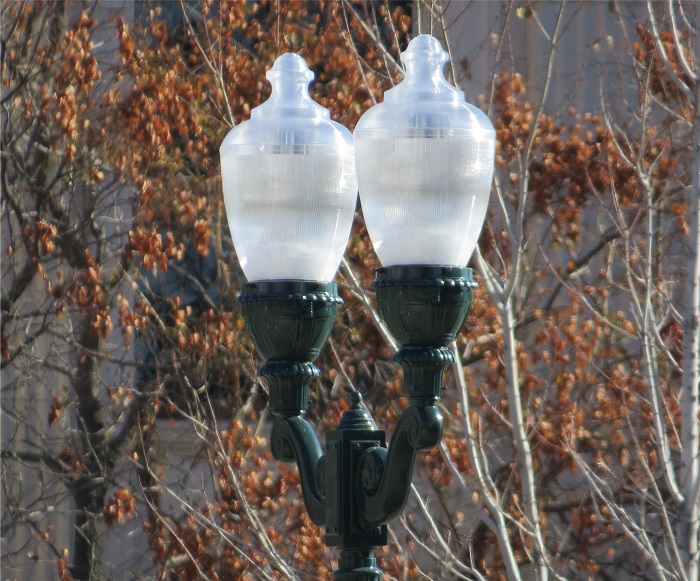 |
| Despite the clouds, Lee Cowan captured beautiful things happening at the site. |
 |
| The windows beside each large upper opening have been installed on all four sides. Two can be seen in their glory here from the north. |
 |
| Lee has closely watched the prep work. First, orange insulation foam fills the gaps around the wooden jambs. |
 |
| Then, flashing is installed over the jambs. |
 |
| These two west windows were the last to be completed this afternoon. |
 |
| You recall the arrival of these windows two weeks ago. Glass was not installed in the lower sashes to facilitate their delivery. |
 |
| Glass in the lower sash is the last step. |
 |
| Other workmen at the site were not standing around admiring the windows. They were busy. |
 |
| Lee calls these building blocks, literally. |
 |
| The finished look of the west side will soon move to the south lot. |
 |
| The building and the grounds are changing every day, but Moroni is safe. |
 |
| Even at night. |







































































